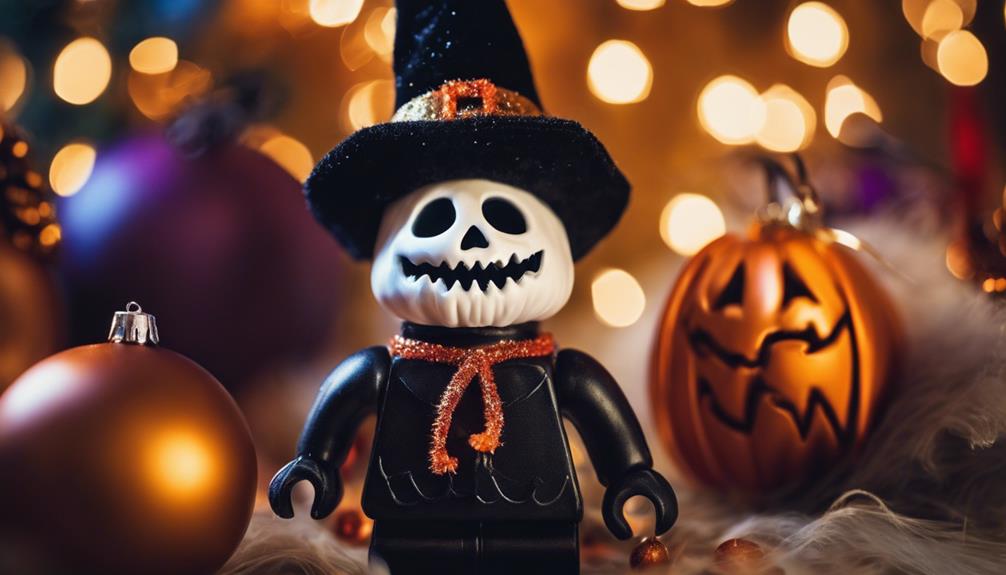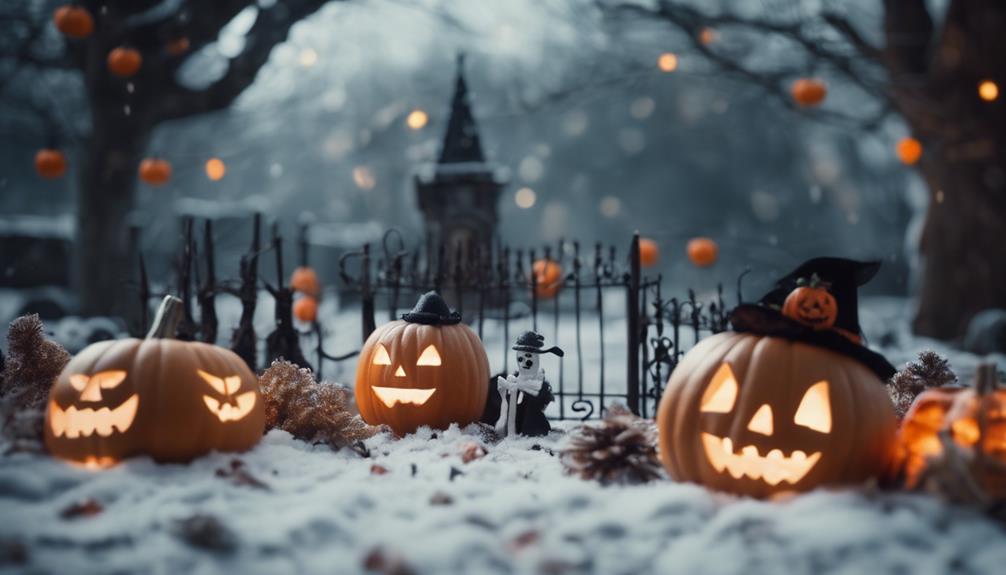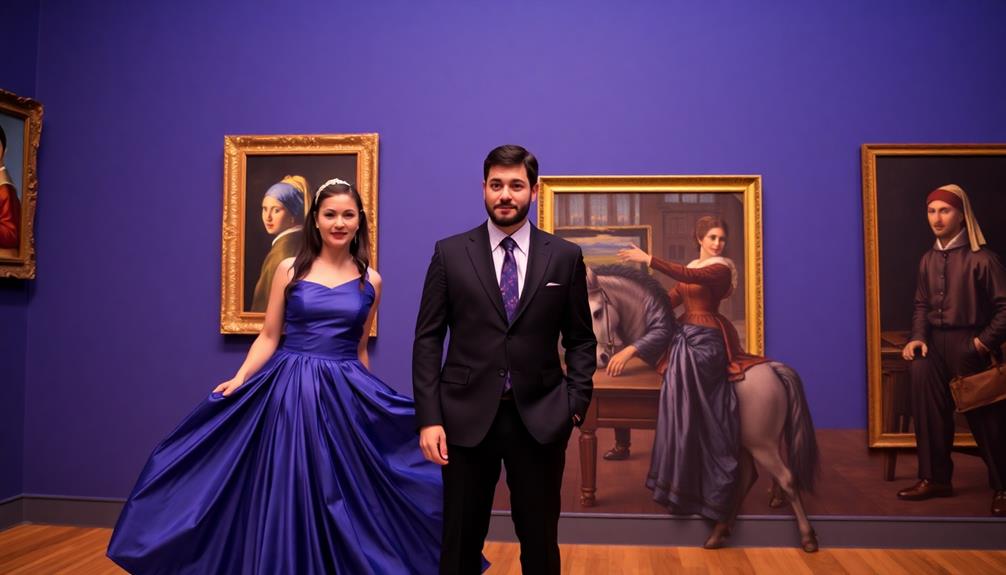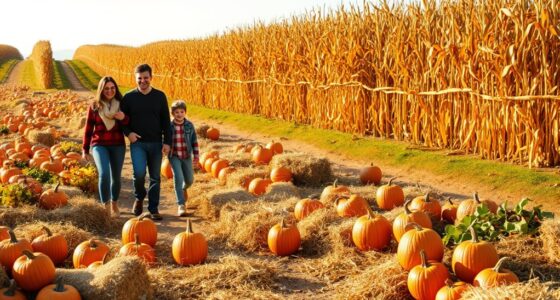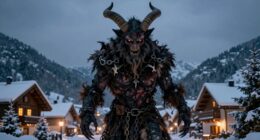Halloween and Christmas share historical connections and cultural practices. Both blend Christian and pagan origins. Halloween from All Saints Day and Christmas from ancient winter celebrations. Both evolved, absorbing diverse influences. Supernatural beliefs are common, with roots in ancient pagan customs. Protective rituals and symbols like mistletoe and evergreens are shared. Cultural practices involve warding off evil and costumes for social inversion. Symbolism – Christmas has Santa and trees while Halloween features skeletons and black cats. Themes of light and darkness explore spiritual elements. Discover more about how these holidays intertwine historical roots and cultural traditions.
Key Takeaways
- Both have origins combining Christian and pagan traditions.
- Supernatural beliefs and rituals are intertwined in both holidays.
- Cultural practices involve warding off evil spirits.
- Symbolism includes iconic figures and colors unique to each holiday.
- Themes of light and darkness play a significant role in both celebrations.
Origins and Historical Influences
When exploring the origins and historical influences of Halloween and Christmas, it becomes evident that both holidays intertwine Christian and pagan elements, showcasing the rich tapestry of religious and cultural traditions. Halloween, originally rooted in All Saints Day, a Christian observance, gradually incorporated pagan-like customs over time. Similarly, Christmas, commemorating the birth of Christ, emerged from ancient pagan winter celebrations, highlighting the interconnectedness of diverse belief systems.
The historical practices of marginalized individuals going door to door in costumes for aid notably impacted traditions like trick-or-treating during Halloween and mumming at Christmas. These customs reflect the blending of societal influences and cultural exchanges that have shaped these holidays. Throughout history, both Halloween and Christmas have evolved, absorbing various influences and practices to form the festive celebrations we now recognize. The amalgamation of Christian and pagan elements in these holidays illustrates the enduring adaptability and transformative nature of cultural traditions.
Supernatural Beliefs and Traditions
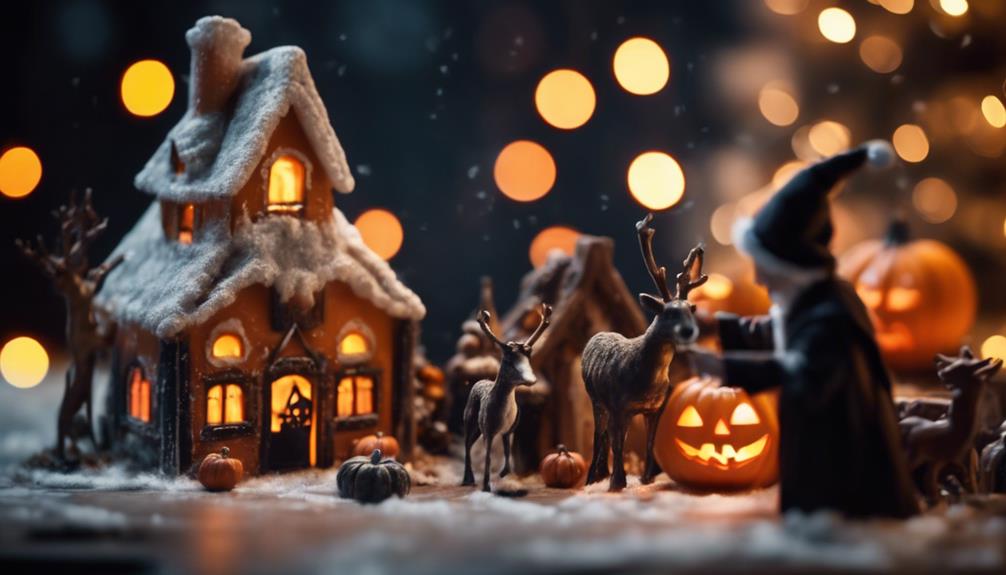
As we explore our attention on 'Supernatural Beliefs and Traditions,' discover the fascinating connections between the spiritual worlds and the practices observed during the Yuletide season. Both Halloween and Christmas have roots in ancient Pagan beliefs that linked the winter solstice to heightened supernatural activity.
During Yuletide, rituals and sacrifices were common, believed to appease spirits and safeguard against malevolent forces. Various cultures engaged in practices aimed at driving away evil spirits using noise, bells, and masks between the solstice and the New Year. Bells and evergreen decorations were thought to possess protective powers in different regions during this period.
Teutonic folklore warned of potential dangers during Yuletide, leading to rituals like sprinkling holy water for protection against evil spirits. These supernatural beliefs and traditions highlight the shared connection between Halloween and Christmas, showcasing how both holidays incorporate elements of spiritual significance and supernatural practices during the winter season.
Cultural Practices and Rituals

Cultural practices and rituals play a significant role in shaping the traditions of both Halloween and Christmas, embodying a blend of ancient beliefs and modern customs. Here are some key similarities in the cultural practices and rituals of these two holidays:
- Warding off Evil Spirits: During Halloween and Christmas, people engage in various rituals and traditions aimed at protecting themselves against malevolent forces, reflecting a shared belief in the need for spiritual protection.
- Social Inversion: Both holidays involve practices like wearing costumes and role reversals, where societal norms are temporarily upended. This tradition has roots in both pagan and Christian influences, adding depth to the celebrations.
- Protective Rituals: Rituals such as hanging mistletoe, burning juniper, and lighting bonfires are common during Halloween and Christmas. These acts are believed to ward off evil spirits and bring good luck, showcasing the shared emphasis on protective customs in both holidays.
Symbolism and Iconography
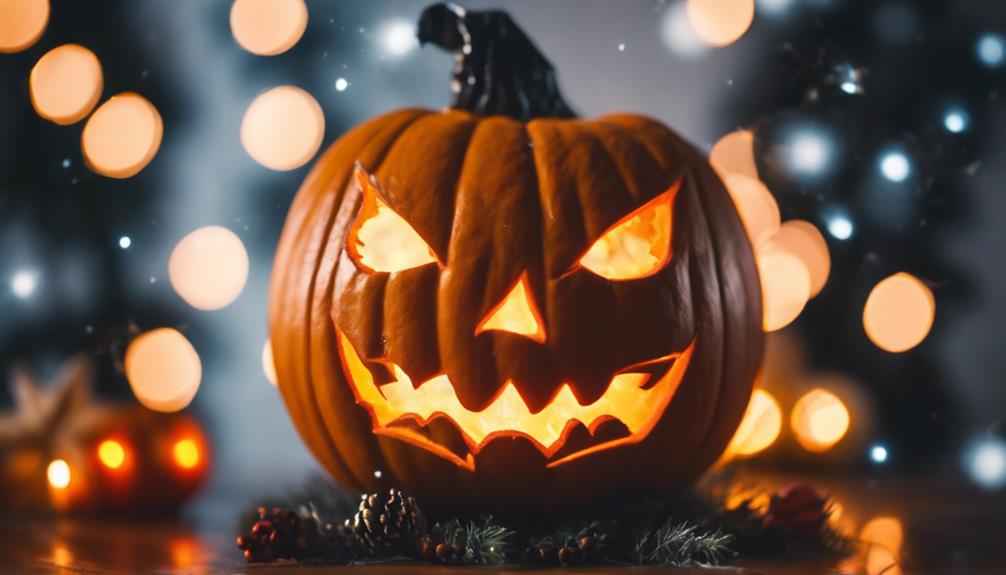
In both Halloween and Christmas, symbols and iconography play an essential role in conveying the essence and spirit of the holidays. Christmas iconography includes Santa Claus, reindeer, and Christmas trees, symbolizing joy and festivity. On the other hand, Halloween features skeletons, bats, and black cats, representing the spooky nature of the season.
Symbolism is also important; Christmas signifies the light of the world through Jesus, while Halloween highlights the darkness of the season. These symbols carry deep spiritual significance, reflecting the themes of each holiday.
Christmas incorporates colors like red, green, and gold to evoke feelings of warmth and celebration, while Halloween uses black, orange, and purple to create an eerie atmosphere. Additionally, Christmas iconography often includes religious symbols such as the Nativity scene and angels, emphasizing the holiday's spiritual aspects. In contrast, Halloween focuses on symbols associated with death and the supernatural, enhancing the mysterious and mystical ambiance of the day.
Themes of Light and Darkness
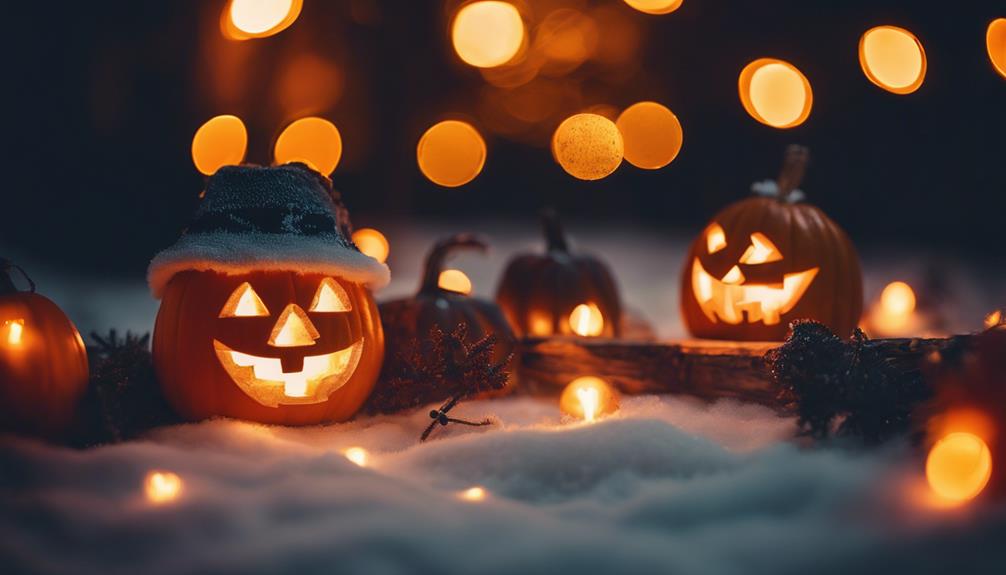
Exploring contrasting themes of light and darkness, both Halloween and Christmas investigate the symbolic significance of illumination and shadows within their respective holiday contexts.
- Christmas Town and Halloween Town: Christmas symbolizes the entry of light into a dark world through the birth of Christ, while Halloween is spiritually associated with the darkest night, signifying fear and the unknown.
- Light Traditions: People often symbolically shine their lights during Christmas celebrations, illuminating the season with warmth and hope.
- Darkness Symbolism: In contrast, the concept of darkness is prevalent during the Halloween season, representing fear and spookiness in the traditions of Halloween Town.
Both holidays explore the interplay between light and darkness in their unique ways, reflecting the diverse traditions and symbolism they hold dear. Whether it's the radiant glow of Christmas lights in Christmas Town or the eerie shadows cast in Halloween Town, these themes of light and darkness add depth and richness to the tapestry of both celebrations.
Frequently Asked Questions
What Is Similar About Halloween and Christmas?
Both Halloween and Christmas share common elements that make them special holidays. From dressing up in costumes to enjoying treats, these celebrations bring joy and excitement.
Parties are a big part of both holidays, creating memorable moments with family and friends. The fun traditions and festive spirit of Halloween and Christmas appeal to people of all ages, making them cherished times of the year.
What Are 3 Similarities Between Halloween and Day of the Dead?
In both Halloween and Day of the Dead, you'll find a shared focus on honoring the deceased, with traditions involving remembrance rituals and connecting with the spirit world.
Both celebrations incorporate symbolic elements like skulls and skeletons, reflecting themes of life and death.
Additionally, both holidays offer insights into cultural beliefs surrounding mortality and the afterlife, emphasizing the importance of remembering and respecting those who've passed on.
Which of the Following Is a Holiday Similar to Halloween?
If you're looking for a holiday similar to Halloween, Dia de los Muertos is a great choice. Both celebrations involve spooky symbols like skulls and ghosts, and they take place around the same time in late October and early November.
While Dia de los Muertos focuses on honoring deceased loved ones, Halloween embraces spooky traditions. So, if you enjoy the Halloween spirit, you might also appreciate the traditions of Dia de los Muertos.
How Far Apart Is Halloween and Christmas?
Halloween and Christmas are celebrated about two months apart, with Halloween on October 31st and Christmas on December 25th. This period allows for distinct themes and traditions for each holiday.
Despite their proximity on the calendar, Halloween's focus on fear and spookiness contrasts with Christmas's joy and gift-giving spirit. The time between these holidays shifts from eerie Halloween vibes to the festive Christmas atmosphere, providing a clear distinction in decorations, activities, and overall mood.
Conclusion
To sum up, it's interesting to observe that Halloween and Christmas share many similarities in their origins, traditions, and symbolism.
Did you know that both holidays have ancient roots dating back thousands of years? This link between the two festive seasons highlights the enduring appeal of celebrating the supernatural, embracing cultural practices, and exploring themes of light and darkness.
Keep exploring the fascinating connections between these two beloved holidays!
